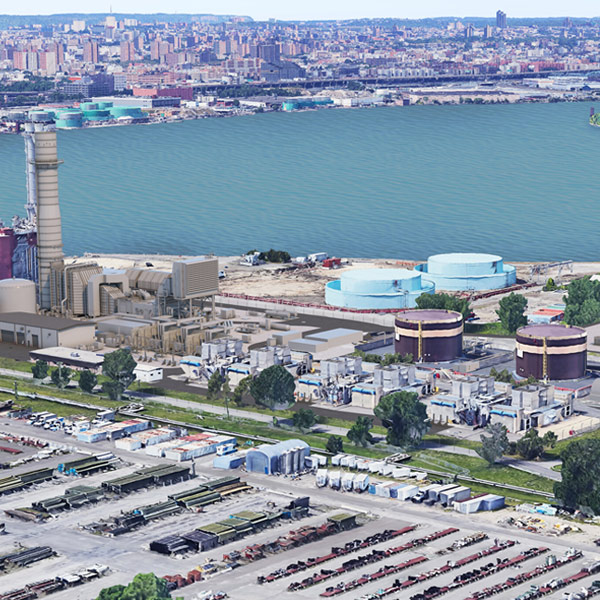In an era of cyberattacks, difficult-to-predict weather and the ongoing transition from baseload power plants with spinning reserves to intermittently available renewable and distributed generation makes grid resilience a lot tougher to maintain than it once was.
Sophisticated electronics — from embedded sensors to ultra-fast switches and complicated state estimators to give grid operators a realistic view of the system and what it could look like in the near future — are part of the answer. Yet there is a growing sense in the industry that perhaps the most important tool is “human performance.”
Now, a new effort by the Electric Power Research Institute looks at workplace behavior and underlying attitudes — and how they appear to reflect the culture of a workplace, which in turn reflects the business practices of a company.
The study wades through the complexity of human factors in a workplace to show how a company’s overall management and employee culture can produce dangerous mistakes or trouble-free outcomes.
“Human Performance in Electric Power,” an exhaustive statistical analysis of data contributed voluntarily by 13 U.S. power companies, debuted July 15 in a webinar sponsored by NERC.
“Individuals have a personality, but so do organizations, and the thing we’re going to talk about today is how … organizations reflect leaders, and how individuals then respond in the [workplace] context,” said webinar moderator James Merlo, former NERC director of reliability management and now vice president of Knowledge Vine, a human performance consulting company, in introducing the study.
The exhaustive analysis — produced by Eric Bauman, manager of EPRI’s Occupational Health and Safety Programs, and Matthew Hallowell, a teaching scholar at the University of Colorado and executive director of consultancy Safety Function — relies on a complex analysis of data to show the continuous and bidirectional influence of business factors, managerial leadership and resulting employee attitudes on the workplace atmosphere — and ultimately how contingencies are handled.
The analysis itself notes that “safety performance has improved considerably in the past 50 years” but argues that despite an enormous number of studies examining “safety climate,” safety programs and employee perceptions, the research has remained “fragmented and dispersed across industries.”
The analysis starts with the acknowledgement that the safety culture of a workplace reflects what the employees collectively think the company and its managers, including upper management, value. In turn, that employee workplace culture influences the management practices themselves.
“What if you and your CEO, your CRO, your CFO had hard numbers to guide your future safety management investments?” Bauman asked the audience.
“We created this project to get at that challenge: Can we quantify the combined impacts of safety management actions and programs on safety performance?
The study examined and correlated “safety climate,” or what employees think management’s degree of safety emphasis is; “leading indicators,” or what management is doing to address safety issues; and “business factors”: whether safety is a corporate objective. “This is the first-of-its-kind analysis,” Bauman said.
“We thought as we envisioned this project, if we found associations, it would empower health and safety managers with numbers that support potential return on investment in health and safety initiatives,” he added to explain further the objective of the study.
“These initiatives have a higher likelihood of improving your company’s safety performance,” he said of the study’s conclusions. “And it’s not theoretical or belief-based. These are numbers. And that’s the beauty,” Bauman said.
Continuing that theme, Hallowell stressed that all of their number crunching of the employee survey data that they received from participating power companies — along with a meta analysis of existing statistical information — produced results that were not simply opinion.
“We structured the research in a way where we let the data tell us what the findings were. And I think you’ll find that to be really important, because at the end, what you’ll find in the final results that … human factors, prevention through design, and some of these other human-oriented practices or behaviors rose to the top of the many things that we considered. And we have very strong empirical evidence for that.
“What Eric and I were trying to do and in this study was find, of those hundreds of things that we might be able to do to improve safety, what are the few that matter the most, what truly differentiates safety performance.
“As a researcher, as a scientist, I can say, that’s something I think what has been somewhat missing from the human performance side of the world, is that hard empirical data to support the very strong logic, theory and philosophy,” Hallowell said.
Noting that previous studies have repeatedly examined employee attitudes about safety and management safety programs, this analysis also devotes time to an examination of “business factors” that play a less obvious role.
A few examples of the 18 business factors examined include:
- Do performance evaluations of upper management include “safety-related considerations?”
- Is management stable, or are there changes in leadership?
- The frequency of technological changes and whether employees are properly trained for it.
- Is safety represented in the company’s organizational structure?
- Is there a robust risk management protocol to identify and respond to organizational risks?
- Are employees required to work a lot of overtime?


